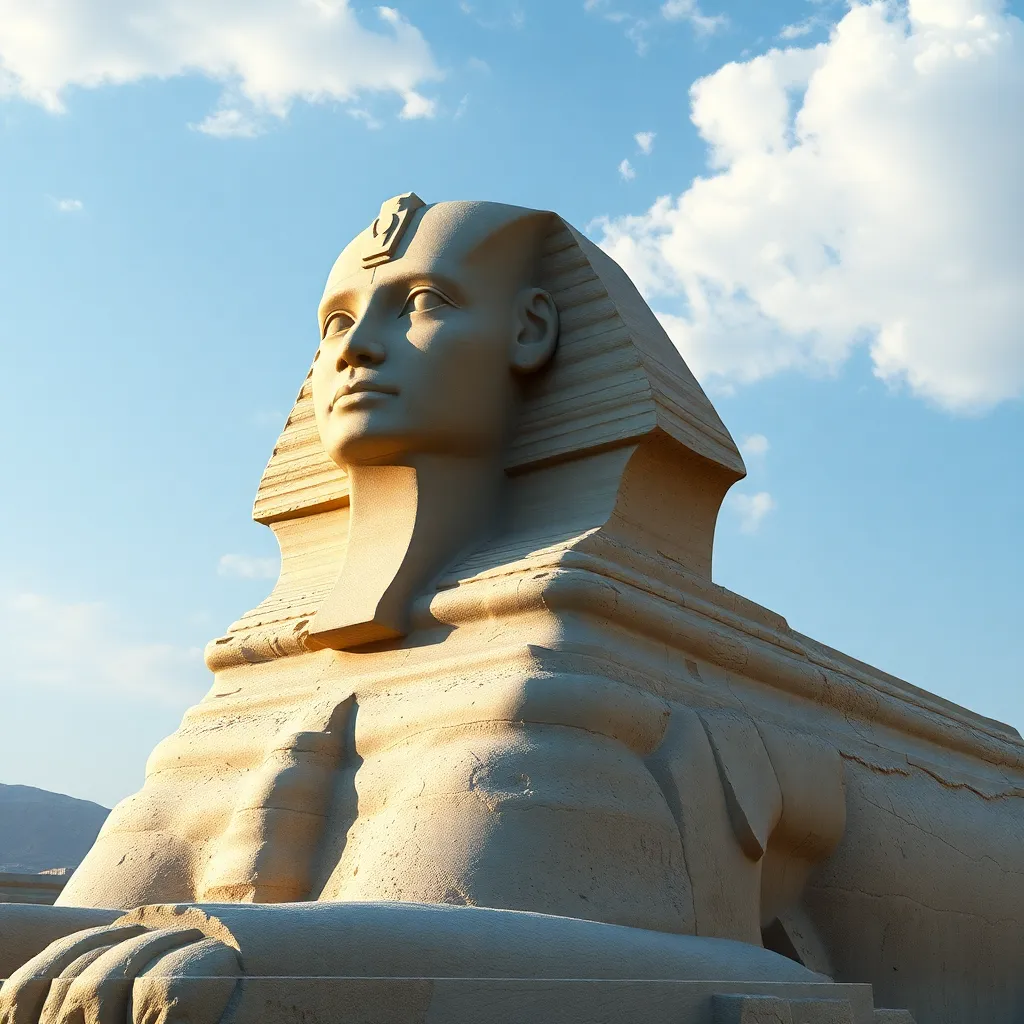The Sphinx: Myths of Wisdom and Knowledge
I. Introduction
The Sphinx is one of the most iconic symbols of ancient mythology, holding a profound significance in both Egyptian and Greek cultures. This mythical creature, with the body of a lion and the head of a human, has been a subject of fascination for centuries. Its historical significance lies not only in its architectural presence but also in the rich tapestry of myths and stories that surround it. The Sphinx represents a duality that resonates deeply with the concepts of wisdom and knowledge, making it a powerful symbol in various mythologies.
II. The Origins of the Sphinx
The origins of the Sphinx can be traced back to ancient Egypt, where it was primarily associated with the sun god Ra and the pharaohs. The Great Sphinx of Giza, carved during the reign of Pharaoh Khafre around 2500 BCE, serves as a testament to the artistic and architectural capabilities of ancient Egyptians. In contrast, the Greeks adopted the Sphinx into their mythology, albeit with different characteristics and stories.
- Historical Context in Ancient Egypt: The Sphinx was often seen as a guardian figure, a protector of sacred sites and tombs, embodying strength and wisdom.
- Influence in Greek Culture: The Greek Sphinx is depicted as a winged creature, often associated with the tragic tale of Oedipus, showcasing the evolution of its symbolic meanings.
III. Symbolism of the Sphinx
The Sphinx’s symbolism is multifaceted, representing the duality of human intellect and animal instinct. This juxtaposition emphasizes the balance between knowledge and primal urges, a theme prevalent in many mythological narratives.
- Representation of Duality: The Sphinx embodies the struggle between reason and emotion, a central theme in both philosophical thought and mythology.
- Guardian of Sacred Knowledge: In many stories, the Sphinx is seen as a gatekeeper, challenging those who seek access to deeper truths.
IV. Famous Myths and Legends Involving the Sphinx
Several myths highlight the Sphinx’s role as a harbinger of wisdom and knowledge. One of the most famous tales is the riddle of the Sphinx in Greek mythology.
A. The Riddle of the Sphinx in Greek Mythology
In Greek mythology, the Sphinx posed a riddle to travelers: “What walks on four legs in the morning, two legs at noon, and three legs in the evening?” Those who could not answer were consumed by the creature. Oedipus famously solved the riddle, symbolizing the triumph of knowledge over ignorance.
B. The Sphinx in Egyptian Mythology
In Egyptian mythology, the Sphinx was closely linked to the afterlife. It was believed to protect the tombs of pharaohs and served as a guide to the deceased, ensuring they passed safely into the afterlife.
V. The Sphinx in Art and Literature
The Sphinx has inspired countless works of art and literature throughout history. Its enigmatic nature and rich symbolism have made it a subject of intrigue for artists and writers alike.
A. Depictions of the Sphinx in Ancient Art and Architecture
In ancient Egypt, the Great Sphinx of Giza is perhaps the most famous representation, symbolizing the power of the pharaoh and the divine protection over the land. Its image has been replicated in various forms in temples, tombs, and sculptures.
B. Influence of the Sphinx on Modern Literature and Popular Culture
In contemporary literature and popular culture, the Sphinx continues to be a powerful metaphor for mystery and the quest for knowledge. It has appeared in various forms, from novels to films, often representing the challenge of uncovering hidden truths.
VI. The Sphinx as a Puzzle and Challenge
The Sphinx’s association with riddles and challenges highlights its role as a test of wisdom in ancient societies. This aspect underscores the value placed on knowledge and intellectual prowess.
A. The Significance of Riddles and Challenges in Ancient Societies
Riddles were a common form of intellectual challenge in ancient cultures, often used to demonstrate one’s wisdom and wit. The Sphinx, as a symbol of such challenges, represents the importance of knowledge in navigating life’s complexities.
B. The Sphinx’s Role in Testing Wisdom and Knowledge
By posing riddles, the Sphinx became synonymous with the idea that wisdom must be earned through contemplation and understanding. This theme is reflected in various mythologies, where characters must prove their intelligence to overcome obstacles.
VII. Contemporary Interpretations of the Sphinx
In modern philosophical discourse, the Sphinx is often used as a metaphor for the quest for knowledge and the mysteries of existence. Its enduring legacy continues to inspire thinkers and seekers of truth.
A. The Sphinx in Modern Philosophical Discourse
Philosophers have drawn on the image of the Sphinx to discuss themes of knowledge, existence, and the human condition. It prompts questions about the nature of understanding and the journey toward enlightenment.
B. The Sphinx as a Metaphor for the Quest for Knowledge
The Sphinx symbolizes the challenges faced in the pursuit of knowledge, representing both the obstacles and the rewards that come with intellectual exploration.
VIII. Conclusion
The Sphinx remains an enduring symbol of wisdom and knowledge, its legacy woven into the fabric of human culture. From its historical roots in ancient Egypt to its modern interpretations, the Sphinx continues to captivate and challenge us, embodying the eternal quest for understanding. Its allure lies in its mystery, urging us to ponder the deeper truths of existence and the significance of knowledge in our lives.




